Making the decision to officially become a goat farmer is an exciting moment for many homesteaders. A few seconds later reality sets in, and you have to actually get to work figuring out how to actually buy and raise the goat herd.
Keeping goats, be they dairy, meat, fiber, or brush clearers is not rocket science. But, if you do not follow some basic steps and properly maintain the herd, a tragic and epic homesteading failure (instead of an exciting success) will likely occur.
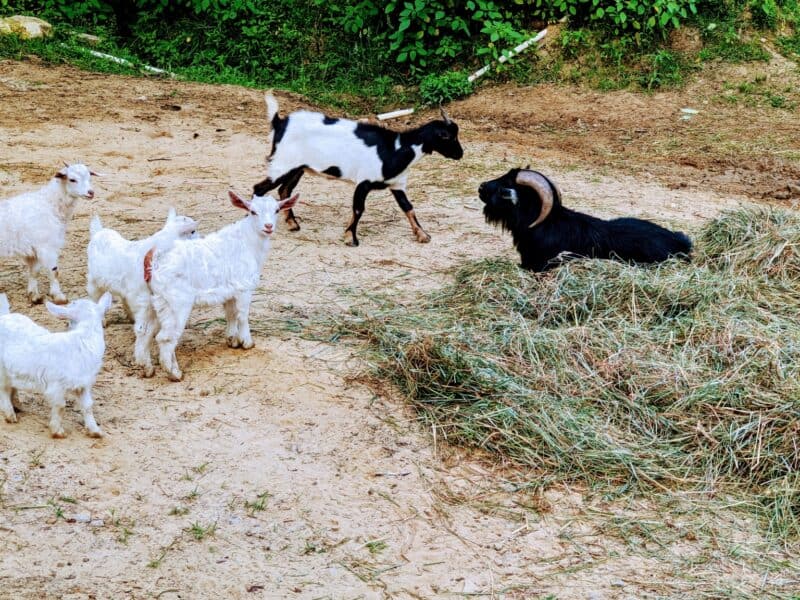
Goats have often been referred to as either the poor man’s cow or the common man’s cow because they too produce meat and milk, but cost a lot less to purchase and require a lot less money and space to raise.
This is one of the main reasons why goats are one of the most often kept livestock on homesteads.
Even if you only have a half-acre suburban backyard you can keep a pair of miniature dairy goats. Homesteaders with just five to 10 acres can keep a fairly large herd of goats.
While there are many different breeds and sizes of goats and the animals are raised for a myriad of purposes, the husbandry basics are all the same.
Following the advice below will not only get your herd-keeping efforts off to a solid start, but by adopting them into the daily husbandry routine, keep the herd health and development on track for years to come.
Table of Contents:
Get the Right Breed(s)
When you’re shopping for goats, you should consider your ultimate goals in raising them first. Only then can you select the best goat breeds for your needs.
If you are raising goats for meat, the best ones to consider are:
- Spanish goats
- Tennessee fainting goats
- Kiko
- Pygmy
- Boer goats
- brush goats (this term can actually refer to various breeds and is used synonymously with names like hill goats and briar goats)
There are several dairy goat breeds that have been crossed with Boers to produce good meat, too, including combinations with Nubian, Toggenburg, Saanen, and Alpine.
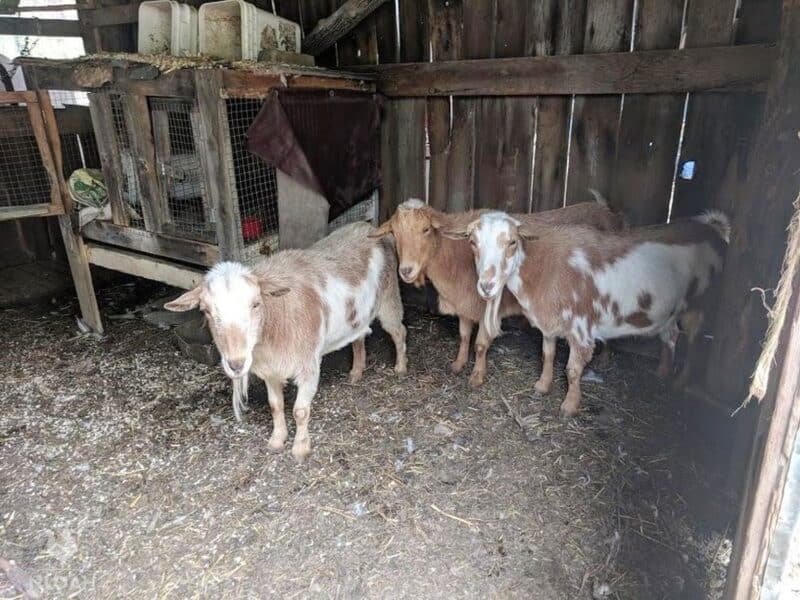
Some of the most common crossbreeds include:
- Savanna
- Texmaster
- Moneymaker goats
If you are raising dairy goats, you will want to consider:
- Saanen – a large, mild-tempered breed
- Nigerian Dwarf goats
- Alpine
- Kinder goats
- Nubian
- LaMancha
When it comes to fiber goats, your best options are:
- Angoras
- Cashmeres
- Pygoras
- Nigoras
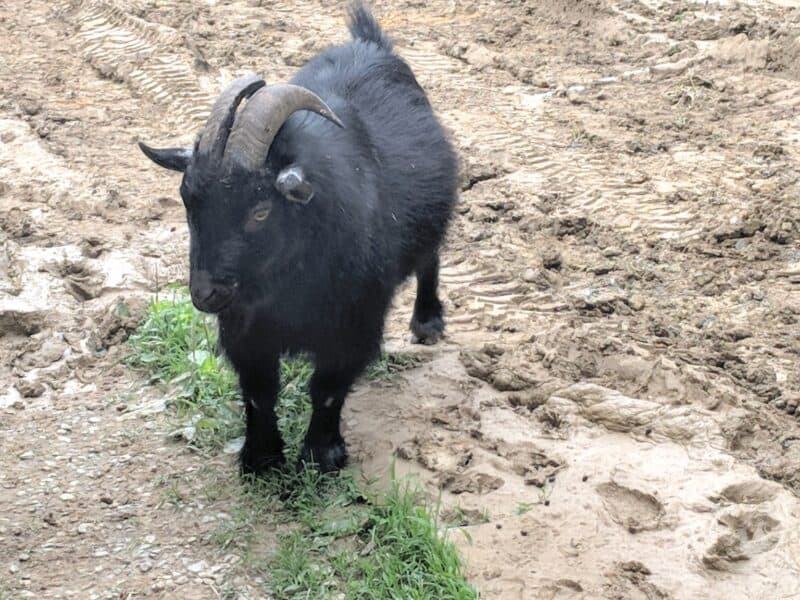
Billy Goats
Billy goats (or bucks) do not need to be kept if you are merely raising goats for fiber or to use them to clear brush on your homestead, and rent them out to do the same for others.
But, if you want to raise dairy goats, or keep growing a meat herd the most economical way possible, a billy goat is definitely going to need to be a part of your herd.
I have always had the best of luck with billy goats, not a single one has been mean or even slightly aggressive with humans. I think my experience could largely be the exception to the rule.
We prefer to keep all of our animals as naturally as possible. Left to their own devices in the wild, goats are not kept separate and figure out the herd dynamics all by themselves.
My billy goats let other herd members know that right behind Pearl, they are in charge, but have never really fought, and merely engage in posturing to get that point across on occasion.
Newbies should only keep one billy goat, and get him young so he is tamed right from the start. Even if the other males you decide to keep intact are his offspring, there is no guarantee he will not become aggressive with them as they begin to mature.
Once you have gained some experience keeping goats, then you can consider whether your growing herd of nannies and does need servicing by more than one billy goat. Keeping the bucks separate from each other and even the female members of the herd until you decide mating is in order is fairly common.
Due to the large range area our herd has, I’ve never had to keep the billy goats separate from either each-other, or from the females.
But, you must make sure the nanny goats and does are not being bred too frequently. Doing so could cause harm to them, cause kids to be aborted, stillborn, or born in poor health, or prompt a decrease in milk production.
But ALL the billy goats I have ever come across can be rather noisy creatures – especially when they are in rut. It may take a while to become accustomed to the sounds a buck makes; at first you may think he is dying or being attacked.
When in rut, a billy goat also emits this nasty-smelling musk scent and urinates on himself to prove his prowess to the females and entice them into mating. Billy goat smells are often worse than their sounds, but you get used to both over time.
Getting the Right Equipment
When you are raising goats, it is much better to start out with the right equipment than it is to realize you need something in an emergency, and have to run to the store in the middle of the night – stores that often aren’t open, I might add.
Here are some of the things you will need on hand:
- Basic shelter and fencing – Goats should not be tethered. They can’t protect themselves from the weather or from predators, and it can lead them to be injured. Make sure your goats have outside areas to roam, including permanent fencing that is strong and tough enough to withstand the intense pressure from a herd of goats.
- Bedding material – Bedding will soak up urine, and make your goats more comfortable, too. Pine or straw shavings are best. Cedar should not be used, as it can damage the respiratory system of your goats.
- Collars and leashes – Invest in these if you would like to tame your goats.
- Food dishes or troughs – These will be used to feed grain or treats
- Grain – You don’t need to feed grain every day, but it can be used as a treat.
- Hay and hay bins – These will be used to hold hay up off the ground as your goats eat. They can prevent your goats from wasting their food. You can also use a cattle panel around a round bale, if you prefer to feed round instead of square bales.
- Goat mineral – Your goats should have access to free-choice minerals at all times. Make sure you are using a mineral mix designed specifically for goats.
- Baking soda – Baking soda can be used to fight bloat.
- Mineral feeders – Use special feeders to offer baking soda and goat mineral. Don’t mix it directly into your feed.
- Watering buckets or troughs – You don’t need a large bucket for small goats – one gallon will suffice. Just make sure your goats have constant access to water, and consider investing in a heated waterer if you live in a cold area.
- Clippers – You will need to clip your goats in the spring, once the weather begins to warm up.
- Grooming brush– This isn’t necessary, but can be used to prevent lice.
- Hoof trimmers – These will be used about once per month.
- Blood stop powder (or Blu Kote) – This powder or spray can be used to stop bleeding when a goat injures itself.
- Rectal thermometer – Using a rectal thermometer is one of the easiest ways to tell if your goat is running a fever and is sick.
- Syringes and needles – 20 and 22-gauge needles work best for most goats and will be used to administer shots and some medications. When it comes to syringes, 3 ml and 6 ml are best.
- Oral drencher – Oral drench guns can be used to administer dewormers and other oral medications.
- Electrolyte mix and/or probiotics – Powdered or liquid electrolytes can rehydrate sick goats and can be administered as an oral drench. Probiotics can also be helpful.
- Activated charcoal – If your goat eats something it shouldn’t (which is, unfortunately, quite common), you can feed activated charcoal to help remove the toxins.
- Antibiotics – It’s not a bad idea to have a few antibiotics on hand in case your goats get sick, but do keep in mind that many of these have expiration dates, so you’ll need to make sure everything is up to date. Penicillin can be used for most conditions, but oxytetracycline is another choice.
- CDT shots– All goats need to be given a CDT shot once a year. This shot should be kept refrigerated.
- Dewormers – It’s a good idea to keep several types of dewormers on hand, as many types of parasites are resistant to one kind or another.
- Epinephrine – If you’re giving goats any kind of injection, it’s important that you have epinephrine on hand. Goats are more prone to anaphylactic shocks when given shots, and the only way to save a goat’s life is with epinephrine.
Shelter
You do not need to spend hundreds to thousands of dollars building a goat pen, but the herd must have someplace safe to sleep at night, and to run into when foul weather or predator threats loom.
Stalls in a barn are excellent space and money-saving ways to create goat shelters. No matter what type of structure you use, retrofit, or build, it must have three solid walls, a weatherproof roof, and a dry and clean “floor” of dirt, straw, or wood – or a combination of all three.
I recommend a four-walled shelter so a door can be closed at night to offer enhanced predator protection, but many goat keepers opt for an open front instead.
We keep miniature donkeys with our goats because they make a sport out of kicking coyotes – the primary goat predator in our area.
Bacteria and fungus will breed quickly in a dirty or damp environment, and can lead to goat pneumonia and other equally deadly illnesses. Proper ventilation is also essential to prevent both the shelter from becoming too hot, and to deter dampness.
Should You Free-Range or Use a Pen?
There is no other homestead or farm livestock that can pull off being quite the same level of escape artists as goats – not even hogs.
When we first got into goats I recalled a phrase my papaw used when discussing raising goats. He said:
When it comes to goat fencing you need to test it with a bucket of water. If you pour water over the fencing and it gets out to the other side, you can bet the goats will too.
I had no intention whatsoever of constantly dealing with goat fencing issues and all the mending it would involve. We have plenty of fence mending on our weekly homestead to-do list thanks to deer, and I was not about to add to those chores by trying to keep goats inside of a fence.
Living on a 56-acre homestead where both the barnyard and our home are half a mile from the road, we had the luxury of space that not every homesteader can enjoy. But, goats are smart animals, and can easily be trained to remain in their own territory much like your favorite dog.
Actually, if you keep a livestock guardian dog or a herd dog breed like blue heelers, the goat free-range training goes a lot quicker and easier. Some “townie” homesteading friends of mine use dog training collars and electric fencing to teach their miniature goats exactly where their territory begins and ends.
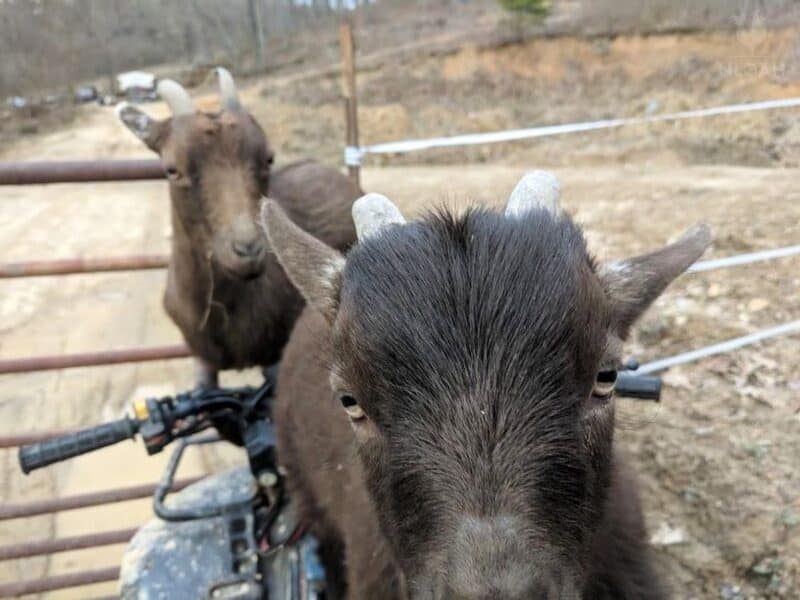
Folks who live on a small homestead or homestead in their own suburban or small-town backyards may still be able to free-range their goats.
It is best to start the free-range training with just one goat. This is an easier proposition if you have only one goat on the homestead for a week or so before adding more, but can also be done by keeping all goats but one penned – preferably visible to the goat undergoing training.
To teach a goat to free range tie it out within eyesight of the stall or nighttime habitat structure where the animal knows is a spot of safety where it is fed and sleeps:
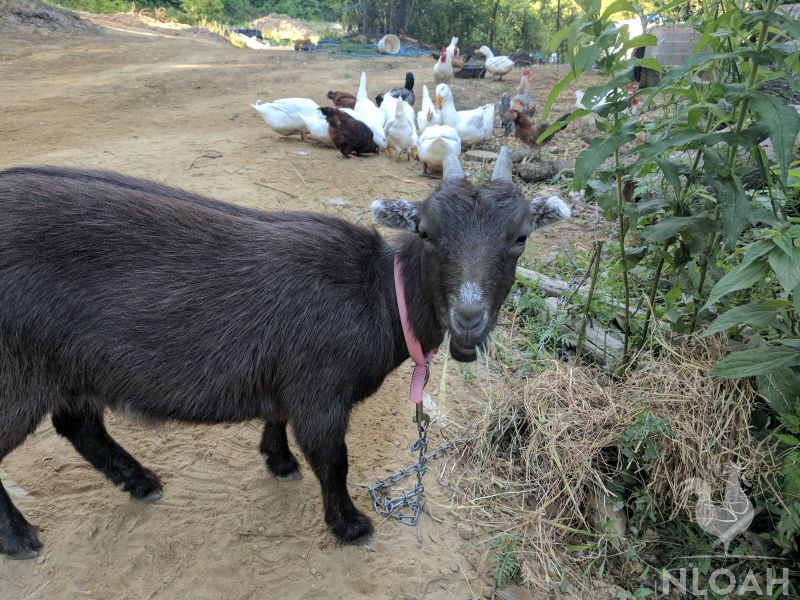
Allow the goat to browse on natural material – we never have to mow a single blade of grass on our homestead.
After three to seven days of this activity, which always ends with the goat being led back to the sleeping and feeding area, begin to turn the goat loose under your supervision for increasing amounts of time each day for roughly three more days.
The two large goats in the photo below arriving on our homestead were put in a stall until they calmed down. All of the other critters on the homestead walked into the stalls on either side to check out the new arrivals.
I placed some hay in front of the stall, and then opened it so they could come out and eat – to learn where they would go to rest and that food would be provided there, as well. After the goats ate their fill and commingled with some ducks and chickens, a young wether decided to give them a tour of their new home.
They wound up by the shelter house and human kid play area. Upon finding a nice sunny spot, they settled down for a rest, napped a bit, and then ambled back to the barn with their escort.
At this point, the goat should have learned its territory, and the turn out and put up routines. Healthy snacks as a reward are always a good idea during training. It took me less than four days to train our first nanny goat to free range.
She initially spent time hanging out with our blue heeler and following me around just like my dog until she garnered a mate about two weeks after becoming a barnyard inhabitant herself.
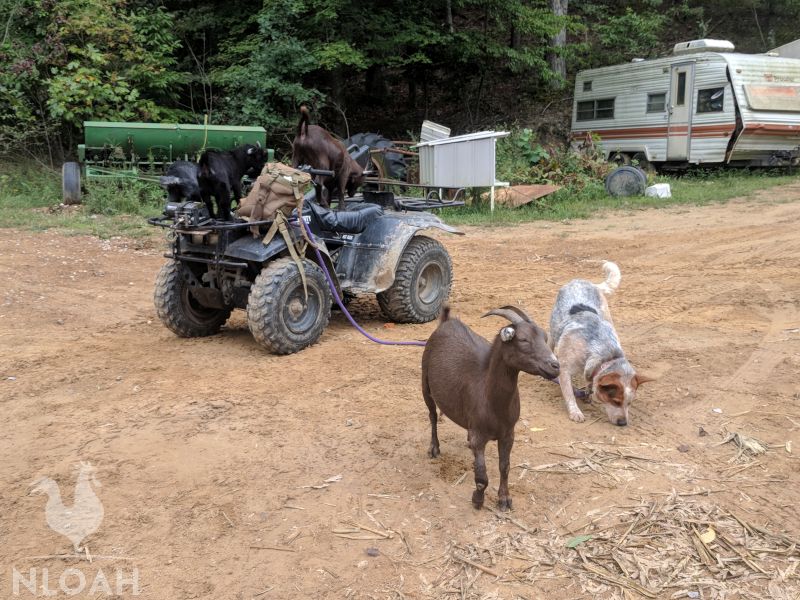
The next goat added to our her was a billy goat, a mate for our Pearl. It took less than two days to feel comfortable turning him loose to free range.
A billy goat is not going to venture away from a mature doe or a nanny goat, making the free range training process go far more rapidly and smoother.
Once the breeding pair was trained, adding a wether to the herd required no training at all. He simply melded into the starter herd and followed their lead in the barnyard.
All subsequent new additions and kids required no free range training either, they simply melded into the daily routine of the already established herd.
If free-ranging goats is not something you want to try, feel up to trying because of space and time limitations, or because it is not permitted inside of a municipality where you live, a sturdy and dependable goat fence to create a pen is a must.
Goats should never live on a chain, the chance of the animals hanging themselves is just too great.
When fencing in a goat pen, use rolled high tensile wire that is attached firmly to wood, and not metal T-posts. This fencing is enhanced by adding some strands of barbed wire and – or electric fencing on the interior to deter climbing or the pushing of heads into or through the fence.
A goat head that goes into a gap may not come back out, especially if the goat has substantially curly horns. Always buy wire fencing rolls with diameter openings that are as small as possible, and recommended for goat use.
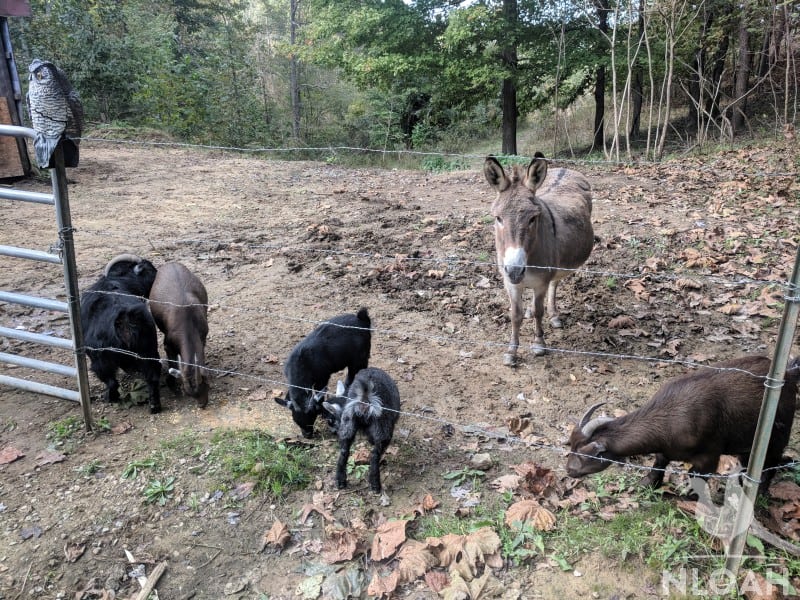
Barbed wire fencing on its own will not keep goats into or out of anywhere – no matter how many strands you use or how tightly they are pulled.
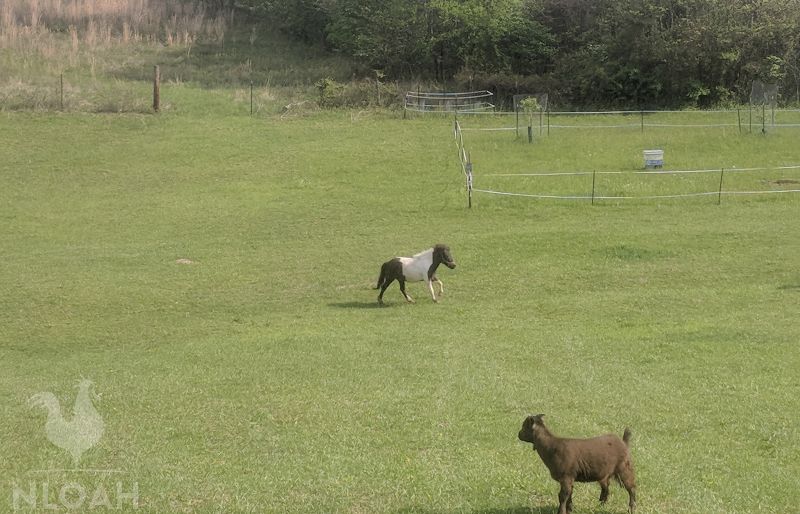
The electric fencing around one of our fruit groves kept out the horses, miniature donkeys, and the miniature horse, but would not keep goats out – but that was the plan.
The T-posts and chicken wire around the young trees protected them from the goats that walked right through the two strands of electrical tape to feast upon the grass all around them.
The flimsy and small opening nature of the chicken wire does not feel sturdy enough under the hooves of the goats and discourages climbing.
Start Small
Always start with a small herd – and maybe even small-stature goats when first starting to keep these amazing and energetic critters. Taking on too many goats at once can be overwhelming from a training, care, milking, butchering, and feeding perspective.
Most goat breeds mate twice a year, but miniature versions tend to mate three times. It will not take long at all to turn a small herd into a large one when first keeping only one billy goat, and two nanny goats.
It is also best to only keep one type of goat when first raising these animals. While there is nothing at all wrong about keeping dairy, meat, or fiber goats on the same homestead, tending to these animals so you can harvest their milk, meat, or fiber can be overly taxing for a new keeper – especially one who works off the homestead either full or part-time.
Keeping different types of does, nannies, or kids in the same pen or free-ranging them together will not typically be a problem.
But to keep breeding lines pure, allowing the billy goats to intermingle will soon turn your top-quality dairy breeds into mixed breeds, the same problem will apply to mixing a fiber buck goat or a meat buck goat in with nannies or does from a different breed.
Starting with a large herd of goats will also make it more problematic to develop a rapport with each one to make them tame enough to human touch that they will seek you out when sick, injured, or lost.
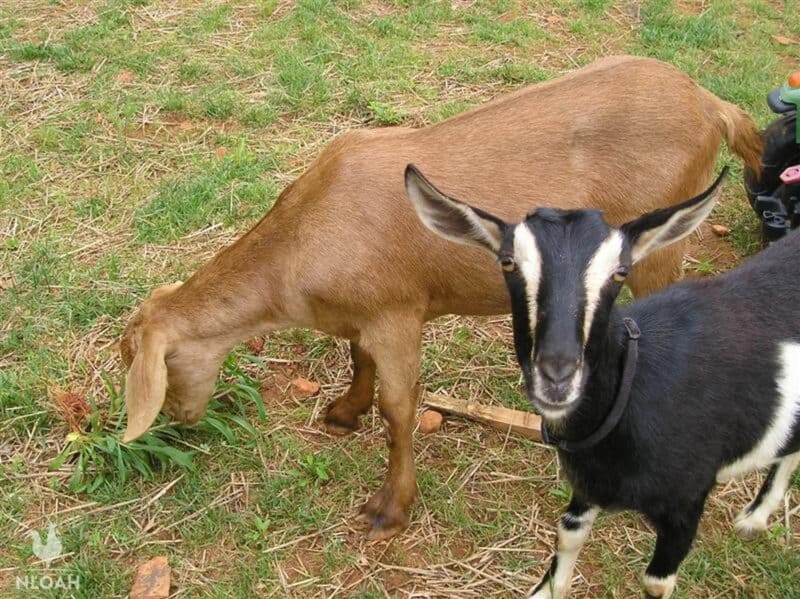
Learn How to Tame Your Goats
It is vital that the goats get used to your touch, smell, and to the sound of your voice at as young an age as possible. When a goat becomes injured, sick, is kidding, or escaped its designated space, the animal needs to run toward the sound of your voice or sight of you, and not in the opposite direction.
Having goats that are “tame” will also help during routine health checks, shots, the milking process, and loading them up into a livestock trailer to go to market or elsewhere.
I do not buy into the need to bottle-feed kids in order to tame them. I have always allowed every kid born on our homestead to nurse from its mother until she decided the little one needed to find all of its own food.
During this time all interested members on our homestead held, and hand-fed each new goat herd addition to get it acclimated to the humans.
Due to their docile nature, intelligence, and size goats are often the animal young 4-H members first exhibit at the county fair. Even young children on the homestead can be tasked with helping to tend to their feeding, watering, and turnout needs if the animals are tamed after joining your barnyard.
Just a few minutes after they are welcomed into this world, the kids are hearing and seeing the keepers in the nursing stall. I pick the kids up shortly after they are born – always cradling their legs and then allowing them to rest on my body to prevent them from panicking because nothing solid is beneath their hooves.
The kids will make a lot of noise and squirm while you talk to them, look them over, and give them a few affectionate pets, but after a few days, this behavior will ebb and eventually cease – in nearly all cases.
By the time the kid is released from the nursing stall, it knows the humans it has met are a source of comfort, food, water, and shelter.
Each evening just before dusk on our homestead the goats will start calling out for their evening treat, and rush towards the house to meet me when I emerge with the expected snack.
They follow behind me like a goat parade all the way back to the barnyard, where they put themselves into their stall while snagging a bit or two of something delicious and healthy.
Recognize a Herd’s Social Needs
Goats are herd animals, they need the social interaction and safe feeling that being with their own kind provides.
Although a goat should ideally be kept with one of their own kind, a safe companion animal type like sheep, a miniature donkey, or a miniature horse is an acceptable alternative to more goats on either a temporary or permanent basis.
A full-size horse can be a fun companion for goats (as you will hilariously see in the video below) but that can depend exclusively on the temperament and size of both the goat and the horse.
Some horses, especially those that are not exposed to goats from a young age, do fine with a goat herd milling about. But, others become annoyed or startled by the goats running about and under them and can kick the goats or pick them up in their strong mouths and fling them.
My miniature billy goat stands beneath my fussy mare to garner some shade and is her little henchmen.
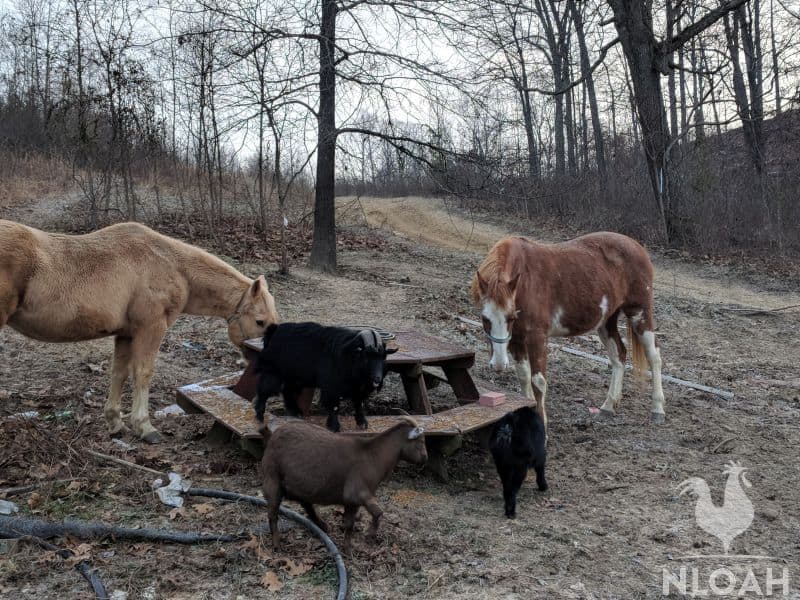
I have watched just a stern stare by the billy goat warn the other horses away from his spot at the hay ring – or even their own food tub.
If you are introducing goats to horses, do so in small intervals while supervising the animals to make sure the match-up is going to be a pleasant and safe one.
As noted above, my goat and dog were once best friends, but their dynamic changed as soon as Pearl got a mate.
They still get along fine, but Pearl was like one of those girls who ditches her friends once a handsome boyfriend comes along. It took Jovie weeks to understand that Pearl did not want to be constant besties anymore.
When Jovie wanted to nap together, Pearl gently nudged the dog away with her horns until she finally got the point to stop trying to cuddle up. Some dogs would have not responded so well to being nudged, however gently it was done, with goat horns.
Even though my goats and all of the dogs now on our homestead get along well, Pearl was once the target of a vicious dog attack that cost her one ear and the primary use of one leg.
That dog had been on our homestead multiple times without a problem, but got too close to Pearl when she was pregnant and got horned – hard. I nearly had to shoot the dog to get it off of Pearl to tend to her wounds.
With the exception of well trained livestock guardian dogs, I would never turn my back on the goats with any dog.
A goat without a safe companion animal of some type tends to grow nervous, anxious, restless, sometimes to the point of being lethargic and losing their appetite – even though goats are voracious eaters.
An unhappy goat often turns into a destructive goat, and that is no good for either the animal or the keeper who has to repair the fencing or anything else the goat attempts to destroy.
Inspect and Trim Hooves Regularly
Inspecting the hooves of the goats at least once a week will help keep the animals in good health. An injury to a hoof can allow bacteria to grow paving the way for an infection to take hold or cause painful and even permanent damage to the goat’s ability to walk.
If your goat herd free ranges in an area that includes rocky or rugged terrain you probably will not need to trim their hooves, but they still need checking weekly for signs of cracking, infection, and rot.
The type of “playground” items inside of a goat pen may also help keep the hooves of the goat herd members trimmed down, but again, that does not mean they each should not be checked regularly for signs of injury, illness, or excessive growth.
On average, goat hooves should be trimmed about every six to eight weeks. You can hire a farrier to do the trimming but that often costs around $15 to $25 per animal.
With a little bit of in-person online training and less than $200 worth of manual farrier tools, most keepers learn how to conduct this routine herd maintenance chore themselves.
Boredom Busters
Keeping a goat herd in a pen without anything for the animals to climb on and jump from will almost assuredly result in bored and ill-behaved goats.
Making a goat playground for the animals from scrap materials that are often already lying around the homestead will keep the high strung and full energy livestock far too busy to get bored – and provide many hours of free entertainment for your entire family to enjoy.
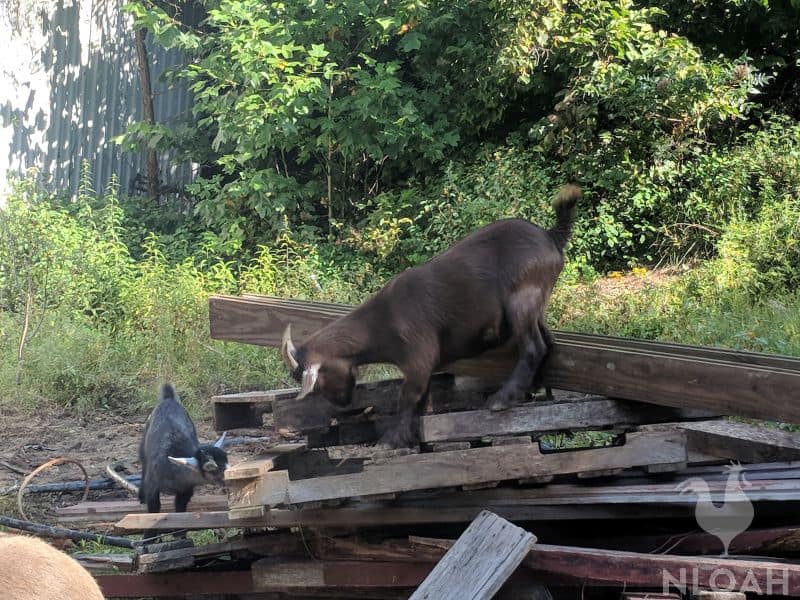
Goats have a natural instinct to climb and jump , and are incredibly inquisitive animals, as well. Some goat keepers meld the pen into the play structure design to save both space and money.
The goats will climb up a plank or onto tires to reach the top of the pen or structure and hang out, and look over their territory before scampering off to play on a goat teeter totter, to climb onto wood spools, through more tires, or to hang out on a platform swing.
If you make a swinging platform for the herd, use a chain to hang it and not rope because, eventually, the goats will chew through the rope.
The diameter of the chain must be small enough that even the budding horns on kids cannot go through it, doing so would risk the animal’s head getting stuck, and cause serious injury or hanging as it tried to free itself.
Goats can jump incredibly far, and use surrounding materials – especially their fencing, to bounce off of or to gain traction amid an escape to greener grass.
Always situate a goat playground in the center of a pen, and make sure not to build it wide enough that it can be used as a springboard to what exists on the outside of their pen.
Regularly inspect the goat playground and any old material you may use to construct it for loose nails, nails protruding through boards, loose boards, sharp metal, and any other potential worn spot that could cause an injury to the goat herd.
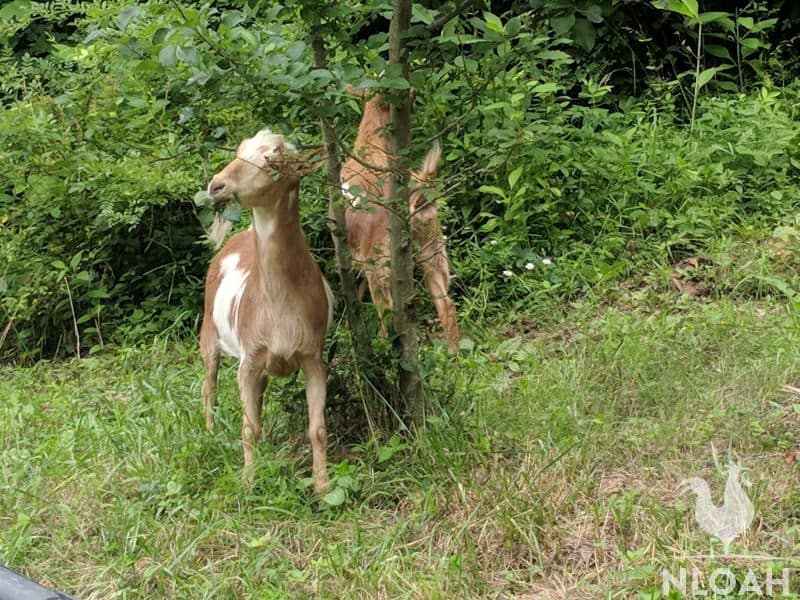
If you plant a tree inside the pen play area to provide shade as well as a free and healthy food source, remember that if the tree can either be eaten to the point that it will not grow or one day grow so tall the goat will climb up into it to hang out – or use it to jump out of their pen.
Do not think you will be immune from the goat version of a cat stuck in a tree dilemma if you live in the South or other locations where palm trees grow. These cunning little critters can climb them also… but might not be able to get back down on their own.
Recognize Signs of Bloating
Some goats are far more prone to developing bloat than others but it is a condition that tends to afflict all goats at one point or another over their lifetime.
My top Billy Goat, Not Negan, is constantly battling bloat, no matter what we do to either prevent or treat it. Goat bloat can be a life-threatening condition that happens when goats eat the wrong thing or even too much of the right thing in some cases.
Like cattle, goats have four stomach chambers – not four stomachs. All of the chambers must be functioning properly for the rumen to remain healthy and prevent bloat.
Ruminant animals, which also include sheep, elk, and deer, need ample roughage for the rumen to function properly. When it does not, the digestive system gets out of whack, causing gas to build up and bloat to occur.
Feeding goats the proper diet, which means primarily or solely hay or natural roughage (leaves, brambles, twigs, weeds, etc.) based is highly recommended. If grain is fed to goats, it should be done so in limited doses, the same rule applies to even healthy treats.
Too much grass or alfalfa can also cause bloating due to the fermentation gasses that build up when they use horse pasture as their main source of food.
You can usually tell if a goat is getting bloated because the right side of its abdomen (where the rumen is located) sticks out more than the right and feels tight like a drum or balloon when touched.
Bloat often causes goats to become lethargic, and lose their appetite. My Not Negan gets bloated and still continues to follow the horses into the pasture, as well as wanting to mate and eat constantly – continuing to prove he is quite an enigma.
A goat that is struggling with bloating may also have difficulty lying down comfortably, grind its teeth, paw at the ground a lot, or lay its head against the pen or fencing and moan.
Gently rubbing the UNDER side of the belly only, and not the side of the goat where the swelling is, while drenching it with a purchased DIY bloat remedy can help the goat release the bloat by belching or passing gas.
Standing the goat up on its hind legs while rubbing the under belly and drenching seems to help, in my personal experience.
My DIY natural goat drench is half a cup of mineral oil, two tablespoons of baking soda, and a few drops of peppermint oil. This is my papaw’s recipe that passed muster with the local livestock vet – but your vet might offer different advice.
You have to be very careful when drenching, especially with a non-compliant goat that is wriggling about. If the goat does not swallow the drenching liquid properly it can flow into the lungs instead of the stomach and cause a potentially life-threatening situation.
Some keepers prefer to allow only a vet to drench their animals – or get trained directly from their vet to do the drenching properly in an emergency situation.
When providing snacks for goats make sure they are healthy ones and fed only in moderate amounts, Bread, crackers, and salty treats should be avoided.
Use the goats and their barnyard friends to help you clean up the garden after the harvest by giving them corn stalks (not silks) to eat – they love the sweet taste:
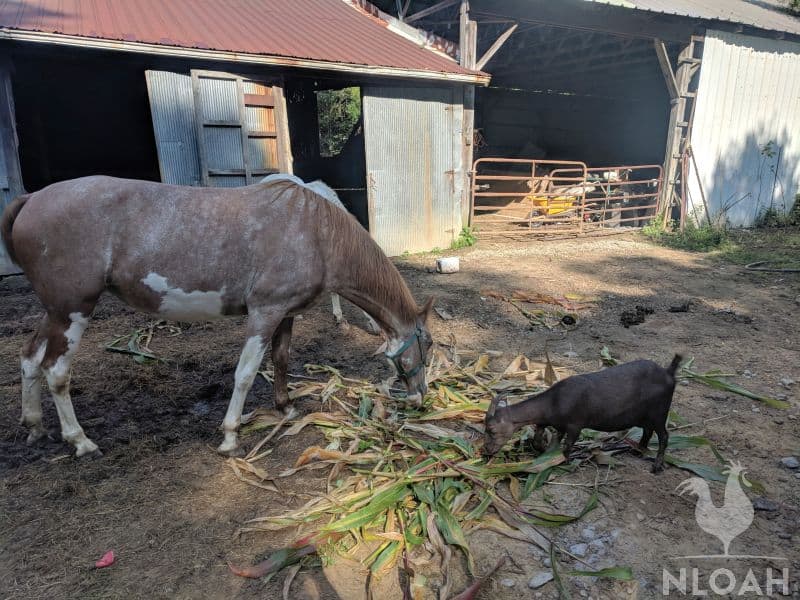
Providing goat specific mineral blocks as a free choice snack can help keep the rumen healthy. If you cannot find goat mineral blocks where you live, opt for equine mineral blocks instead of sheep blocks to ensure the goats are getting a copper supplement, as well.
Baking soda is likely the best goat bloat prevention and initial treatment you can offer. It may also be useful in deterring over eating – which can also become a chronic problem with goats.
The inexpensive little box of baking soda can help restore proper pH balance in the goat’s body, and break up the tight gas bubbles so they can be released.
Baking soda should always be left as a free choice snack in the goat pen, so the animals can instinctively nibble on it when they are developing a digestive problem.
Rasing Goats as Pets vs. Livestock
There is a firm dividing line when it comes to keeping goats as pets or livestock. If the goats will be used for brush clearing, milking, or fiber, there is more of a gray area when it comes to the whole pet or barnyard livestock concept, but no such wiggle room exists when raising meat goats.
Naming your breeder meat goats might be fine because they could be allowed to grow to a ripe old age, and then merely be brush clearers, but kids born to these animals should be tagged and numbered and not given names.
If there are children on your homestead, not naming or getting attached to the adorable and playful goat kids is going to be problematic, even if they have a grasp of what farm life or homestead living is all about.
When it comes to meat goats, it is still fine to tame them into being handled so they can be properly and humanely cared for, but you must stop short of looking at the animals as either long-term barnyard inhabitants or pets.
Our goats came into our home when it was just a shell of a house we were finishing out while moving in. I did not attempt to potty train them because they were not going to be pets and my beloved husband didn’t like them coming indoors even when the floors were still uncovered concrete.
But, they were still perfect house guests and did not climb on anything or go potty the entire hour they were inside. In fact, Pearl walked outdoors to potty and then came back in hoping to get another healthy snack.
Many folks are now keeping miniature goat breeds solely as pets, which makes sense due to their highly trainable nature, cute and cuddly nature, and how popular they are at petting zoos.
It is possible to potty train a goat kid, but even when kept as pets, these animals truly need to spend the bulk of their time – if not all of it, outdoors so they can garner the proper diet, and be free to embrace their natural tendencies to run and climb.
Banding
Male goats should not be banded until they are a minimum of 10 to 12 weeks old. If you band a goat too soon, their urinary tract might be too small to react properly to the simple and quick procedure, and vastly increase the chances of a blockage occurring.
You can pay a goat to band your bucklings but most keepers take care of this process themselves.
A veterinarian may be willing to teach you how to band your young male goats to turn them into wethers, as will most experienced goat keepers. The manual tools needed to band goats cost less than $50, on average.
Debudding
When we first got into goats I was adamant about only buying ones that did not have horns. I am now so glad that our first two goats ended up being already mature, and had horns.
While debudding a mature goat is not necessarily impossible, it is a far more complicated procedure that can be painful for the goat – and a process that many vets will not be willing to undertake, as well as caution the keeper against.
I was intimidated by a goat with horns, but found out quickly there was no need to worry. Our dogs have sharp teeth, our horses have strong legs and thick hooves, yet we would never think of taking any action to change those parts of their anatomy.
The horns are the only part of their bodies that a goat can use to protect itself. It is beyond rare for a goat to bite and even if one does their teeth are not pointed and sharp like a dogs nor are their jaws able to provide the pressure of a horse to cause damage.
But yet, some folks still prefer to debud a goat kid for either their own safety or presumably that of the goats to avoid potential injury if the animals fight or stick their head where it does not belong.
As already noted, all of my goats have their horns and yet we have not had a single injury caused by fighting or a misplaced curious head.
If you do decide to debud your goats, do so when they are kids and do not attempt to do this on your own unless you have been professionally or properly trained.
Three rescue goats that we took in, the large ones in the above free-ranging photo, had severely botched debudding that caused them problems as they aged.
Some parts of their horns still develop and left sharp edges that would snag on trees or fencing and pull the brittle horns away from the skin causing bleeding. The cost of having the horn buds of a goat kid removed by a vet will vary by location, but typically costs between $75 to $100 per animal.
Build a Quarantine Stall
Although creating a quarantine stall will take up extra space, and cause additional expense to your goat keeping operation, doing so is still well worth digging deeper into your pocket and putting in the work.
A sick goat should immediately be removed from the herd for treatment and the pen and everything in it disinfected to prevent the spread of contagious diseases, bacteria, exposure to feces, parasites, or a fungal infection.
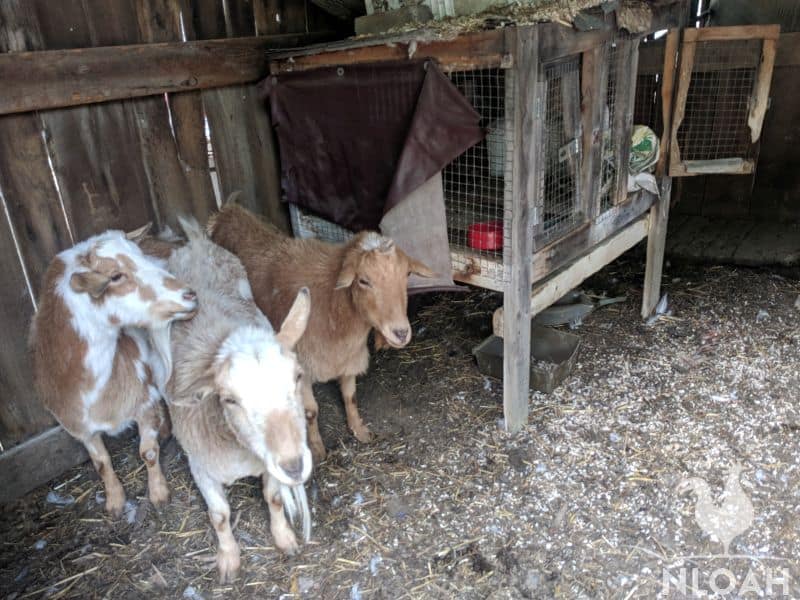
The goats in the photo above did not have to be quarantined upon arrival because they were rescue animals that had already been quarantined and vet checked before I agreed to take them in.
But, had I purchased a new animal or agreed to take on an emergency rescue, they would have spent two weeks living in this stall and the outdoor roaming area that I can erect quickly with pre-set T-post and a few rolls of high tensile wire fencing and electric fencing I keep just for this purpose – and disinfect after each use.
Everything inside the quarantine stall must be removed and disinfected after an animal has been living inside of it. After raking out every last strand of hay and straw I liberally spread agricultural lime and Diatomaceous Earth on the ground.
After three days of the mixture having been applied, I rake it out also before shoveling in some fresh dirt so the quarantine stall is ready to go again at a minute’s notice.
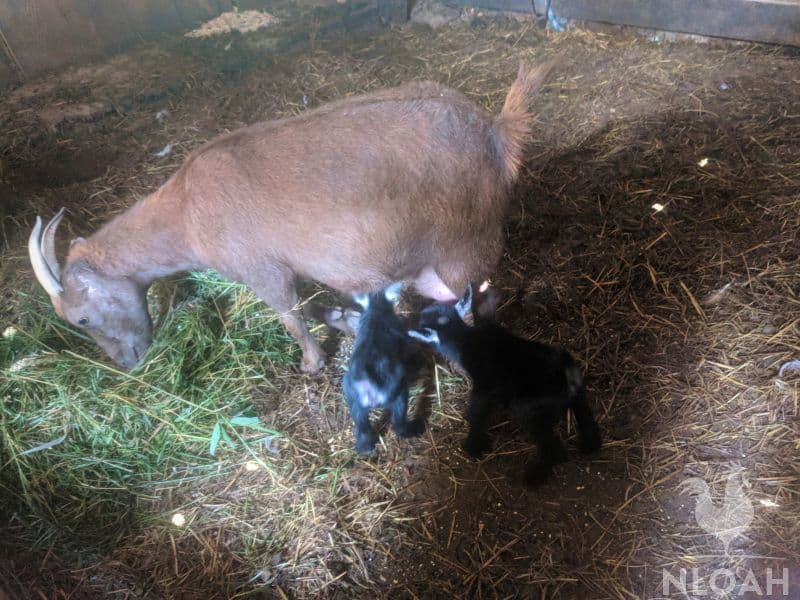
Build a Nursing Stall
Some goat keepers use the same stall for both quarantine and nursing. I recommend against this dual use from a simple practicality perspective. I have had does or nanny goats get ready to kid while the quarantine stall was in use, or shortly after.
If you have two separate stall areas you are in better shape in case two female goats need kidding space at the same time – which also happens when you are keeping a large herd.
Being a preparedness focused gal in all things, I made the nursing stall large enough so it could be divided with high tensile wire, and used by two goat mommas at the same time just in case the quarantine stall was in use.
I generally keep the momma and baby in the stall for one week before allowing them to venture into a temporary play yard just outside of the stall – the same style of quick set up as I use with the quarantine stall.
Although the momma goat may be eager and ready to be outdoors, all of the romping by the kids can be too much for the nanny, cause her to expend too much energy chasing her babies about, and add to her anxiety level because she will be ever watchful for barnyard and predator threats – even with the fencing.
At the two-week mark, the momma goat has regained more of her strength and she is ready for a little breather from the antics of the kids. Our nursing stall gets plenty of natural sunlight and fencing the nanny and kids can see through on both sides to prevent her from feeling closed in.
Unlike the quarantine stall, other animals can happen by and rub noses with her and check out the new additions. This is a great way for the kids to get acquainted with the sights, sounds, and smells of the barnyard before venturing outside to greet the big wide world.
Expect your billy goat to spend a lot of time looking into the nursing stall and attempting to get inside to his mate. Do not skimp on stability and sturdiness when building the walls of either the nursing stall or the play yard fencing.
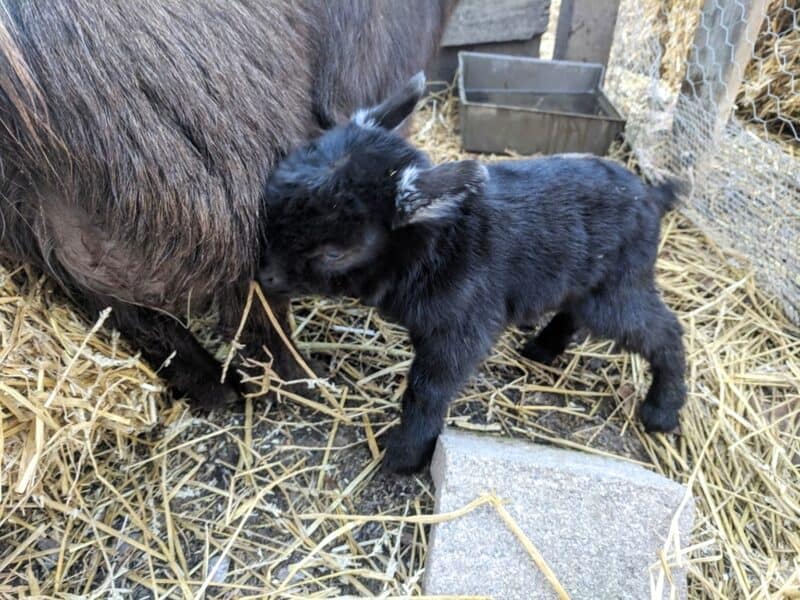
The strength of even a miniature billy goat is fairly tremendous when he is determined to get somewhere he really wants to be, especially if you do not want him in there.
Placing a few tires or a ramp in the nursing stall will give the kids something to pounce upon and climb, allowing them to burn off their seemingly boundless energy, and giving the new momma a chance to rest.
Goat Buying Tips
If a deal seems too good to be true, it likely is. While you may occasionally luck into great goats at a bargain basement price because someone is downsizing, getting out of goat keeping, or inherited the herd, that is often not the case.
Even if you do come across a once in a lifetime deal on quality goats, if taking on so many new animals at once requires more time, space, or money that you can afford when feeding and vet costs are taken into consideration, it really should be passed on, as well.
In my opinion, it is always the best idea to buy goats from a local breeder that you either know or who has verified references.
Being able to view the breeding pair – and siblings or kids on site will give you a better idea about the overall health of the herd. A shot and general health record should also be made available for your review when considering purchasing a goat.
Always ask to tour the goat pen to inspect its cleanliness, and ask as many questions as necessary about the husbandry routine, health inspections, worming, and feed regimen until you are satisfied that the goat has been properly cared for.
Purchasing goats from a livestock auction is always an option, but not necessarily a good one. Unless you can inspect the goats prior to them being placed on the auction block, I would not even consider buying live animals from a livestock auction.
It is equally important to know the rules that livestock sellers must adhere to when putting animals up for sale. Any reputable auction will include participation guidelines for all potential buyers. Shot records and vet checks are often a part of livestock auction requirements.
Purchasing a registered purebred goat is going to be more expensive than buying a potentially equally good goat that has no pedigree.
How important having a registered goat is to you and your homestead goat operation will depend largely upon how you are going to use the animals (meat, dairy, fiber, or brush clearing) and how the animals are going to be marketed.
If you are raising goats as part of a breeder operation for straight resale, it might be worth your while to go the extra money to have “papered goats” since they usually bring top dollar.
When selling locally to other farmers and homesteaders, they may be more interested in a specific type of breed that is known to be a goat milker or produce top quality meat than they would be with a formal piece of paper indicating their breeding heritage.
But, if you are going to show the goats, verified registration is almost always required. Winning goat shows can increase brand awareness and stature, which drives more customers to you in the process.
Always look at any goat you are going to purchase, whether it is cheap or a super expensive registered one, to detect signs of bloat, hoof deformation, for proper debudding if the animal no longer has horns, and for swelling or signs of infection on the utter, teats, or testicles.
Large testicles on a billy goat could be a sign of a health problem, and not an indication of mating prowess.
There are some questions you will want to ask, and precautions you will want to take when buying goats, too. This will help you make sure you are getting healthy goats that will do well for you in the future.
Ask your breeder if the goats are registered, if that matters to you, and if so, what registry. You should ask what kind of shots are given to the goats and whether they are tested for diseases.
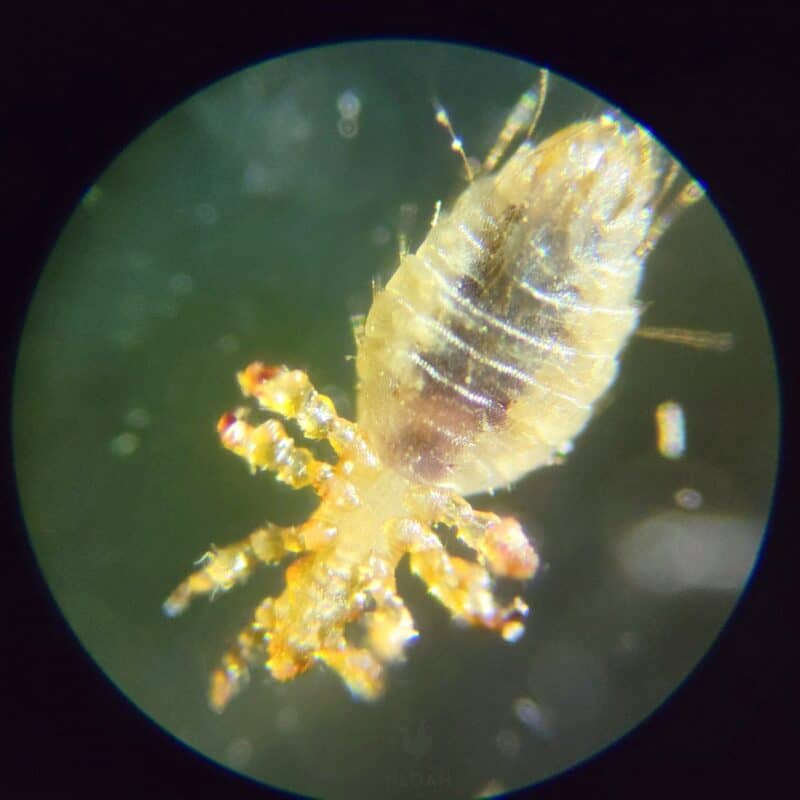
Have there been any health problems in the herd? Are they polled or disbudded? Have any goats died due to an undiagnosed disease?
As for kids, are they bottle-fed or dam-raised? Is the milk pasteurized? Is there a history of spontaneous abortion?
You should also ask, if you’re interested in meat goats, what kind of market weights are normal, and what the feeding program looks like. For fiber goats, asking questions about how much fiber (and what kind) is essential.
Goat Breeding
If you are going to be raising a large herd of goats, you may want to familiarize yourself with the ins and outs of goat breeding. It’s important for dairy goats, in particular, since you can’t have dairy goats unless you have baby goats!
Here are the basics…
Males can breed as young as seven weeks old – but that’s not something that should happen. You should wait a bit longer to make sure your bucks are healthy and ready. If you don’t want your bucks breeding his female companions, make sure you either band him, or remove him by seven weeks old.
Bucks will go into a rut just before a doe is ready to breed. They will get a surge of hormones that encourage them to breed. They can go into rut at any time, for the most part.
Once a male goes into rut, it often signals a female to go into rut. They will do all kinds of funny things while in rut, like snorting, spitting, and even drinking their own urine.
Females, on the other hand, will only go into heat every 21 days. A heat can last up to three days. Some breeds of goats, like Boers and Nigerians, can breed year-round, but most other goat breeds are seasonal breeders, only going into heat from August to January.
Wait to breed your goats until they are about eight months old or 80 lbs. One year old is an even safer number to shoot for. You will know that your dose are in heat when they start wagging their tails or mounting other does. They may have some mucosal vaginal discharge, too.
The goat gestation period is five months, but there is some natural variation to this. The average goat kid litter is two to three, but there can be just one and up to five kids per doe.
You can breed your goats on an annual basis to maintain their milk supply, or you can breed just once a year. Does can produce babies as long as they live, but will start to experience more birthing and pregnancy complications as they get older.
You will know your doe is pregnant if you conduct an ultrasound about 30 days after breeding. There is also a blood test that can be done a bit later. However, if you go off looks alone, you usually won’t be able to detect a larger belly until your goats are about 90 days into the pregnancy.
Goat Diseases
Goats are pretty hardy animals, but there are some key indicators to watch for if your goats aren’t feeling well – your goats will do a pretty good job of letting you know that.
For example, if you find that your goats are not chewing their cud or not getting up, they could be sick. Other problem signs including not eating at all, feces that aren’t pelleted, or goats that are either not urinating, or are straining to urinate.
A failure to drink any water is also a sign of illness, as is a hot udder, oddly held ears, limping, pale eyelids and gums, coughing, or crying. Goats that isolate themselves from the herd or have runny eyes or noses may also be sick.
There are several diseases that are common among goats, some of which can spread to other livestock species as well.
Coccidiosis is the most common disease. Adult goats shed coccidia in their feces, which can then contaminate the rest of the habitat. Infection can cause diarrhea, loss of condition, and frailness.
There is a shot that can be given, but it’s easiest to control for this disease by moving your goats to clean ground regularly, and not letting them overgraze and area.
Parasite infestations are also common, and can be prevented in the same way. You may find that your goats suffer from problems like weight loss, diarrhea, anemia, and poor growth. Bottle jaw, or a swollen jaw, is a telltale sign of parasitism, too.
other diseases, though less common, include chronic wasting disease, paratuberculosis, sore mouth, Clostridium perfringens type D., and caprine arthritis.
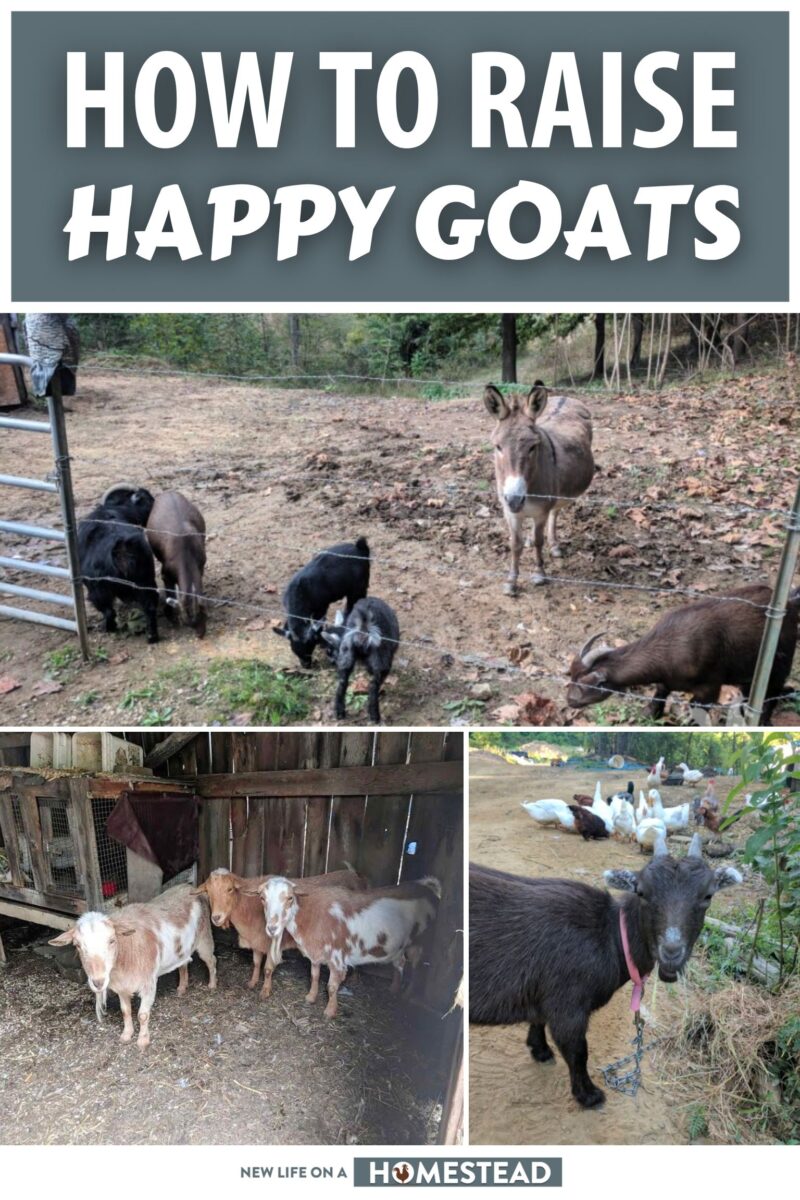

Tara lives on a 56 acres farm in the Appalachian Mountains, where she faces homesteading and farming challenges every single day, raising chickens, goats, horses, and tons of vegetables. She’s an expert in all sorts of homesteading skills such as hide tanning, doll making, tree tapping, and many more.
